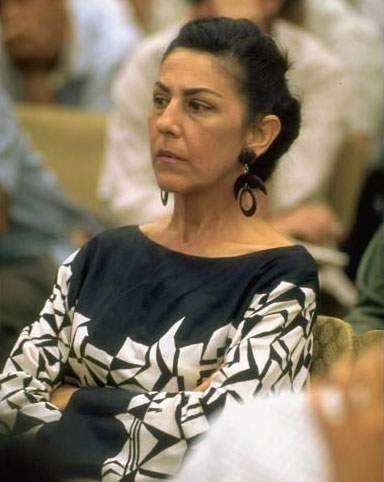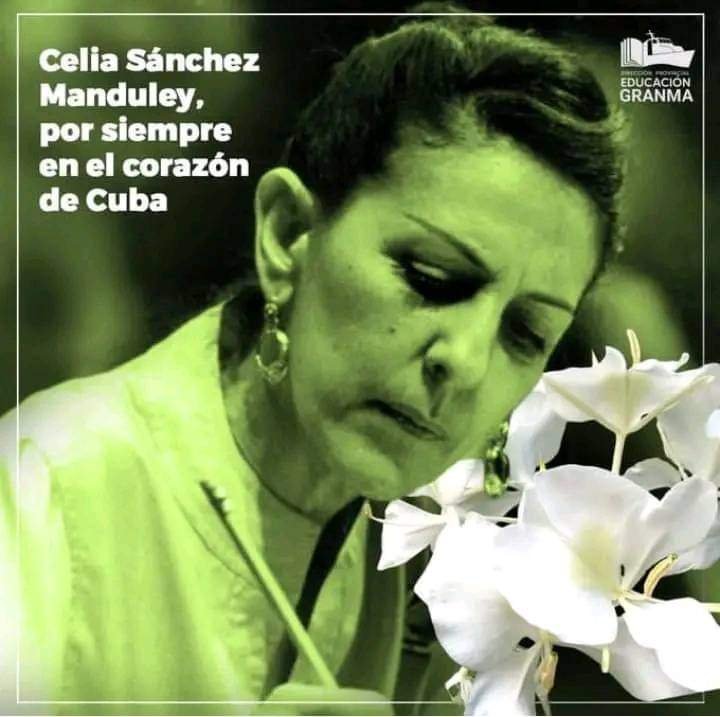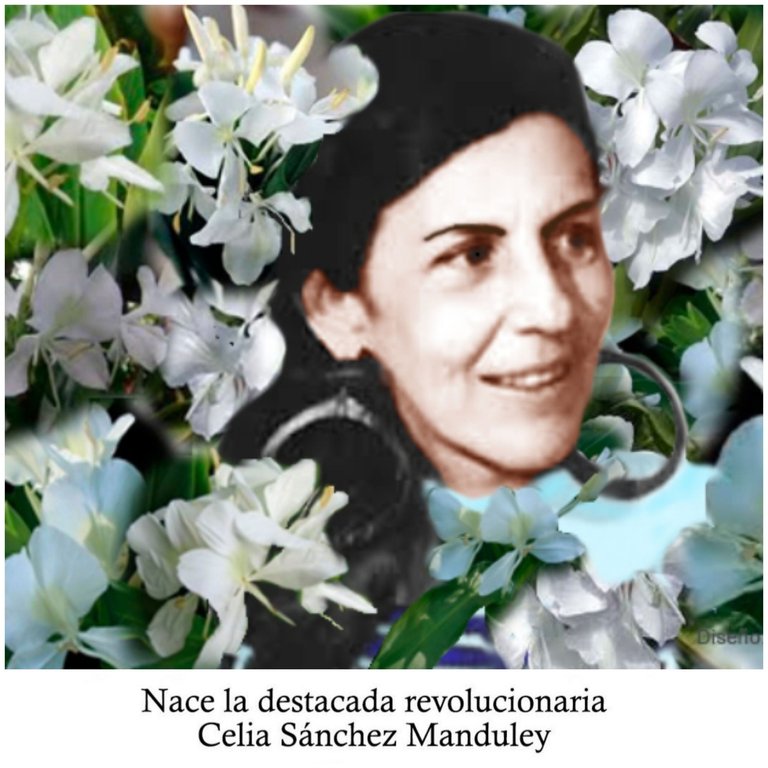The history of my country is full of wonderful stories that summarize the heroism of the Cuban woman. In every home in this country there is a woman who is an example of selflessness, sacrifice and love for her loved ones. In every workplace, neighborhood, corner you can see the work of Cuban women and their dedication reflected.
But, to be consistent with the theme and to comply with one of the rules of the contest, I am going to talk about one of the women in the history of Cuba with whom I identify, her name: Celia Esther de los Desamparados Sánchez Manduley.
Perhaps the fact of having as part of her name de los Desamparados, her life was entirely dedicated to fight for their welfare and development and what she achieved in her short life shows the involvement she had with the most needy.
There was no work or sphere of society that was alien to her. She managed to be one of the most loved people in our country because everything she touched she turned into goodness and beauty. She educated by example and, despite her illness, she never asked to do anything she was not capable of doing.
She was unable to have children, but that did not stop her love for children from being immense. In each of the homeless, poor children or those from the eastern mountains of the Sierra Maestra her hand was stretched out and she became a bridge of Hope between those children and herself.
Today, more than 55 years after that deed, many women and men remember that thanks to her they were able to become good human beings and contribute to society.
Her illness of lung cancer did not prevent her from giving her body and soul to her social projects and to the fight for the most needy.
If you ask me why I identify with this woman, I would answer you immediately:
- Because of the love she felt for the most humble and the dispossessed.
- Because of her eternal vocation for social justice and her love for human beings.
- Because, in spite of not having children, she took in many homeless children in a social project and took them to the capital of the country where she gave them shelters and managed to teach them to read and write and to learn a trade.
- For building several works of social benefit for workers, students and peasants.
- For building works to support and protect the environment, such as the Lenin Park in Havana, which has served for the recreation of millions of people and is a lung for the city because of the large number of trees that have been planted and preserved.
- For being an example of struggle for human betterment.
The Cuban intellectual and revolutionary Armando Hart Dávalos called it "The most autochthonous flower of the Revolution".
I took the images from Twitter
I used the translator Deepl Tanslate
ESPAÑOL
Hola queridas amigas de esta comunidad y a todos los hombres que estén. Hace varios días que no escribo. Problemas personales han incidido y, aunque todavía continúan he decidido participar en uno de los temas propuestos para esta semana y que no podía dejar pasar la oportunidad de participar.
La historia de mi país está llena de historias maravillosas que resumen la heroicidad de la mujer cubana. En cada una de las viviendas de este país hay una mujer ejemplo de abnegación, sacrificio y amor por los suyos. En cada centro de trabajo, barrio, esquina usted puede ver reflejada la obra de la mujer cubana y su dedicación.
Pero, para ser consecuente con el tema y cumplir con una de las reglas del concurso voy a hablar de una de las mujeres de la historia de Cuba con la que me identifico, su nombre: Celia Esther de los Desamparados Sánchez Manduley.

celia sanchez
Quizás el hecho de tener como parte de su nombre de los Desamparados, su vida la dedicó por entero a luchar por su bienestar y desarrollo y lo logrado en su corta vida demuestra la implicación que tuvo con los más necesitados.
No hubo una obra o una esfera de la sociedad que le fuera ajena. Ella logró ser de las personas más queridas en nuestro país porque todo lo que tocaba lo convertía en bondad y belleza. Educó con el ejemplo y, a pesar de su enfermedad nunca pidió hacer algo que no fuera capaz de hacer.
No pudo tener hijos, pero eso no le impidió que su amor por los niños y niñas fueron inmenso. En cada uno de los niños desamparados, pobres o de las montañas orientales de la Sierra Maestra su mano se tendió y ella se convirtió en un puente de Esperanza entre esos niños y ella.
Hoy, a más de 55 años de aquella gesta muchas mujeres y hombres recuerdan que gracias a ella pudieron convertirse en seres humanos de bien y aportar a la sociedad.
Su enfermedad de cáncer de pulmón no le impidió que se entregara en cuerpo y alma a sus proyectos sociales y a la lucha por los más necesitados.
Si usted me pregunta por qué me identifico con esta mujer enseguida le respondería:
•Por el amor que sentía hacia los más humildes y los desposeídos
•Por su eterna vocación de justicia social y su amor por el ser humano
•Porque, a pesar de no tener hijos acogió en un proyecto social a muchos niños y niñas desamparados y se las llevó para la capital del país en donde les dio albergues y logró que aprendieran a leer y a escribir y aprendieran un oficio.
•Por construir varias obras de beneficio social para los obreros, estudiantes y campesinos.
•Por construir obras de apoyo y protección del medio ambiente, como el Parque Lenin de la Habana que ha servido para la recreación de millones de personas y es un pulmón para la ciudad por la gran cantidad de árboles que se han plantado y se conservan.
•Por ser un ejemplo de lucha por el mejoramiento humano.
El intelectual y revolucionario cubano Armando Hart Dávalos la llamó “La Flor más autóctona de la Revolución”
Las imágenes las tomé de Twitter
Utilicé el traductor Deepl Tanslate





